#tetrapods
Explore tagged Tumblr posts
Text
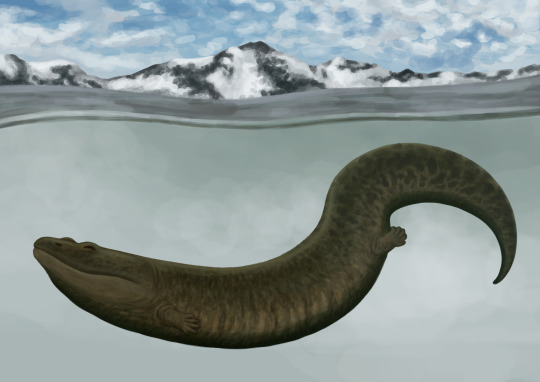
Gaiasia, a massive recently described stem-tetrapod from the Early Permian.
6K notes
·
View notes
Text
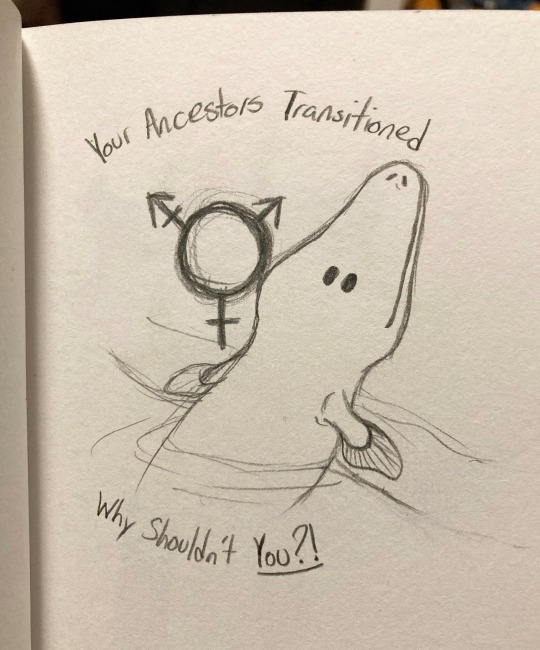
I read the phrase “transitioned onto land” for about the thousandth time the other day, but this time I noticed an opportunity!
#tiktaalik#my art#art#sketch#tetrapods#trans#trangender#transgender art#trans art#trans artist#transmasc artist#paleoart#palaeoart#paleo art#palaeo art#palaeontology#palaeoblr#paleontology#palaeo
4K notes
·
View notes
Text
Surveying Mass Extinctions - Part 1
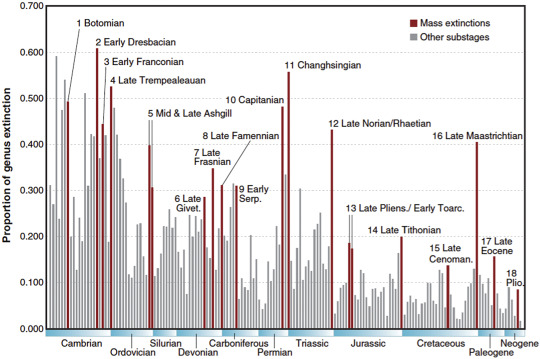
Patterns of Extinction, taken from Marshall, 2023
Mass extinctions are when a large sample of biological clades undergoes a geologically-brief period of die-off that is statistically higher than the background rate of extinction (Marshal, 2023). Most of the organisms that have ever lived died out through the regular trials of natural selection, but on occasion the Earth's conditions changed so rapidly that many different species could not adapt in time.
These extinction events were some of the driving forces that shaped the evolution of life, typically be "reshuffling the deck" or weeding out a few key taxa, thus paving the way for new life to flourish. So what are these mass extinctions and just how did they change the world?
In this post, I will be providing a brief account of our current understanding of each extinction event: when they occured, their causes, and the victims and survivors. As you'll come to discover, the pop-science view of "five big mass extinctions" is complicated by evidence suggesting that some singular events are best seen as two or three, while others have been neglected by mainstream coverage.
Great Oxidation Event
When? - ~2.4-2 Billion Years Ago (Paleoproterozoic Era)
Cause - When photosynthesizing bacteria evolved the Earth's atmosphere did not contain free oxygen, being mainly CO2 and nitrogen. The process of photosynthesis converts sunlight into sugars which takes in CO2 and expels oxygen. The abundance of prokaryotes engaged in this chemistry released oxygen in enormous quantities. While much of it initially was absorbed by dissolved iron on the seabed, the rest rose into the atmosphere. This increase in free oxygen changed the air content and triggered global cooling (perhaps spawning glacial periods).
Victims - It has been generally proposed that the newly oxygenated atmosphere had negative effects on the then-common anaerobic bacteria & archaea, who should have suffered a mass extinction due to oxygen poisoning. While direct evidence for this had been lacking for some time, recent geochemical work suggests "a rapid reduction in primary productivity of >80%" that "imply a collapse in primary productivity" (Hodgskiss, 2019).
Survivors - Aerobic prokaryotes would have flourished in the aftermath of the Oxidation Event, while anaerobic forms would have migrated and adapted into areas still free of oxygen. It has been argued that the evolution of eukaryotes was spurred by the changes, but so-far this is controversial (Fakhraee, 2013).
End-Ediacaran Extinction Event
When? - ~541 Million Years Ago
Cause - An event little-studied and sometimes doubted (MacLeod, 2015), recent work posits that Ediacaran communities were generally low-diversity and "quiet"-ecologically (Darroch, et al. 2015). The gradual evolution of new animal life (a.e. not an explosion as typically described) at the bridge of the Cambrian corresponds with ecosystem-engineering that simply pushed many of the Ediacaran species to extinction.
Victims - The mysterious "Ediacaran fauna": a collection of soft-bodied, basal-animals. Dipleurozoans (e.g. Dickinsonia), trilobozoans, and cephalozoans (e.g. Spriggina) went extinct.
Survivors - Petalonamids like Charnia, frond-shaped stem-eumetazoans (animals with tissues, nerves, and muscles) were the only classic Ediacaran forms to make it through. Genetic and fossil evidence shows that the ancestors of many living animal groups were around at the time: they likely contributed to the extinction in the first place. This event marks the transition towards the so-called "Cambrian Fauna" of marine invertebrate biodiversity that characterized the next 40 million years.

Archaeocyathids (Stanton F. Fink, CC BY 2.5)
End-Botomian Extinction Event
When? - ~513-509 Million Years Ago (Middle Cambrian Period)
Cause - Recent work points to roughly 4-pulses of the "Cambrian Explosion" (Benton, 2023). By 513 MYA, this had ceased, and marine invertebrate faunas were abundant in the world's oceans. Evidence from sulphur isotopes suggests that volcanic eruptions in present-day north Australia led to a rise in CO2 and anoxic conditions on the continental shelves (Hough, et al. 2006). Such shifts are prime conditions for disrupting and destroying reef ecosystems; the early Cambrian saw the rise of archaeocyathids, reef-building relatives of sponges, that supported marine communities.
Victims - The last of the petalonamids died out. Archaeocyathids and the reefs they built perished. There were losses among brachiopods (obolellates died out), trilobites (the spiny olenellids in particular), and it has been proposed that the halkieriids & Wiwaxia - potential stem-mollusks - were victims but there are some issues with stratigraphic-dating and there is tentative evidence they survived into the Ordovician.
Survivors - Paleontologists recognize a "Cambrian Dead Interval" following the Botomian in which marine biodiversity was low for a while (Brannen, 2017). The climate was fairly cool and geologists have found evidence of coastal ice within tropical zones that likely kept surviving invertebrates in check (Runkel, et al. 2010). For context, the Burgess Shale community is thought to have come into being following the extinction event.
Early Dresbachian & Franconian Extinction Events
When? - ~502 & 497 Million Years Ago (Late Cambrian Period)
Cause - A series of extinction pulses that are little known. Attention has been drawn to the Steptoean Positive Carbon Isotope Excursion or SPICE, a return to anoxic conditions due this time to coastal upwelling (Bond & Grasby, 2017).
Victims - Trilobites experienced particularly high losses, with the flat-bodied redlichiids dying out and the genera-records of North America and Australia lowering over time (Bond & Grasby, 2017).
Survivors - Marine invertebrate communities remained low in diversity compared to earlier times.
Cambrian-Ordovician Extinction Event
When? - ~485 Million Years Ago (Late Trempealeauan Age)
Cause - The culmination of punctuated Cambrian extinctions, with eruptions in southern Africa contributing to even-lower anoxic conditions in the oceans.
Victims - Among other invertebrate losses, trilobites were reduced in clade-diversity to such levels that they never recovered from their peak in the Cambrian.
Survivors - Despite the losses among trilobites, modelling suggests that a few clades may have entered symbiotic relationships with sulphur-bacteria, ensuring their survival in hard times (John & Walker, 2016). Brachiopods radiated into entirely new groups following the extinction event, while conodonts (lamprey-like early vertebrates) truly began to flourish afterwards. Evidence from Morocco and the United Kingdom show that some of the Cambrian marine fauna survived into the Ordovician (Botting, et al. 2023).

Anatomy of a Bryozoa zooid (SLP456, CC BY-SA 4.0)
Late Ordovician Extinction Events
When? - ~445-444 Million Years Ago (Mid & Late Ashgill Epochs)
Causes - Following the various Cambrian extinctions, marine invertebrate faunas underwent a radical shift called the Great Ordovician Biodiversification Event: the new "Paleozoic Fauna" constituted mainly of brachiopods, bryozoa, echinoderms, graptolites, and cephalopods and remained in place for roughly 230 million years. Two pulses of extinction are recognized at the end of the period, having commonly been attributed to the rise in the Gondwanan Ice Sheet in the southern hemisphere (a sort of proto-Antarctica), which caused a drop in coastal sea levels while simultaneously chilling the tropical oceans. Additional factors have been proposed, including a convergence in volcanic activity that reduced oxygen-levels in the seas and further cooled the climate. Recovery of black shales in North Africa and Arabia indicate that this rapid icehouse cooling was just as rapidly followed by severe greenhouse warming (Brannen, 2017). This is not consensus, however, and other proposals have been work-shopped including volcanic global warming (with no glaciation involved) and extraterrestrial events (Bond & Grasby, 2017, Benton 2023).
Victims - The first wave of extinctions primarily hit free-swimming and planktonic forms, and "multi-branched" graptolites were hit very hard. The second wave of extinctions was less severe, but overall both periods saw significant loses in sessile (fixed to the ocean floor) organisms (including crinoids, "inarticulate" brachiopods, and bryozoa). The iconic giant nautiloid cephalopods like Endoceras died out.
Survivors - Evidence points to a lessening in regional marine faunal diversity but a broadening of geographic ranges for particular organisms. Trilobites, brachiopods, and bryozoa did survive, but now they were a shell of their former variety. Perhaps the most remarkable post-catastrophe boost was in the early vertebrates: jawless fishes had evolved in the Cambrian, but following the Ordovician they radiated, developed paired fins, and gave rise to jawed fishes or gnathostomes.
Silurian Extinctions
When? - Between 432 and 420 Million Years Ago
Cause - A series of three little-known pulses of extinction during the Middle and Late Silurian Periods. The first (the Ireviken Event) seems to correspond to deep-ocean anoxia, while the second and final (the Mulde & Lau events) follow a drop in sea levels
Victims - In the strata in which these extinction events occurred, there were significant losses among trilobites, graptolites, and conodonts. There is evidence to suggest a fall in plantkonic-productivity (Bond & Grasby, 2017)
Survivors - Rugose and tabulate reef-builders remained unaffected
Zlichov, Daleje, Chotec, Kačák & Taghanic Extinctions
When? - Between 410 and 386 Million Years Ago
Cause - Five minor pulses of regional extinctions throughout the Early and Middle Devonian Periods, attributed to sea level rises and oceanic anoxia
Victims - Goniatites and agoniatitids, relatives of ammonites, suffered losses, as did trilobites, conodonts, brachiopods, bryozoa, and a little-known group of lophophorates called tentaculitids. An additional group of reef-builders - the stromatoporoid sponges - also experienced declines along with certain rugose and tabulate coral taxa
Survivors - While there were losses among marine invertebrate clades, no major groups died off altogether.

Devonian Reef, showcasing rugose & tabulate corals (James St. John, CC BY 2.0)
Late Devonian Extinctions
When? - Between 372.2-358.9 Million Years Ago
Cause - Long recognized as a singular extinction event (and one of the "Big Five", the Late Devonian is better understood to have encapsulated perhaps two pulses of extinction. The first was largest of the two, the Kellwasser Event, followed millions of years later by the Hangenerg Event which closed out the period. There have been issues with poorly-dated strata, and this has led to conflicting data suggesting times of global cooling and warming (Brannen, 2017). A leading contender for the two pulses had been the rise and spread of terrestrial plants: the evolution of root-systems lead to widespread weathering of rocks and soil run-off, which triggered a particularly deadly combination of ocean anoxia and poisonous planktonic blooms akin to red-tides (Smart, et al. 2023). There is also evidence to suggest volcanic activity played a role in at least the Kellwasser Event (Benton, 2023).
Victims - This was the peak for reef-building organisms during the Devonian, and these events led to such a great loss in rugose & tabulate corals, with the stromatoporoids going extinct, that these ecosystems never recovered. Overall marine life suffered tremendous extinctions across invertebrate and vertebrates groups. Trilobite diversity was cleaved once again, e.g. lichids, corynexochids, harpetids, odontopleuridans, and phacopids. Cystoid echinoderms went extinct. Pentamerid brachiopods went extinct. Most of the jawless fishes and all of the jawed and armored "placoderms" went extinct (think of Dunkleosteus & Bothriolepis).
Survivors - Trilobites only barely made it through the extinction event, with only the proetid clade surviving. Bivalve and gastropod mollusks - originally minor elements of the marine fauna - began to experience a rise and spread of variety. Fish diversity, though severely depleted, did eventually recover under new adaptive radiations, particularly among cartilaginous and lobe-finned groups. There is little evidence to suggest that land floras and faunas were effected by the changes.
Serpukhovian Extinction
When? - Between 330 and 325 Million Years Ago
Cause - A significant mass extinction at the end of the Mississippian or Early Carboniferous Period. Recent isotopic studies point to (you guessed it) deepwater anoxia spreading to shallow coastal waters (Hu, 2022).
Victims - The Mississippian seas were originally home to massive groves of crinoid forests supplemented by surviving rugose corals, but following the Serpukhovian Event these environments experienced a major turnover. Major brachiopod groups suffered losses, as did conodonts.
Survivors - Marine invertebrate faunas remained low throughout the rest of the Carboniferous Period.
Carboniferous Rainforest Collapse
When? - ~305 Million Years Ago
Cause - The famous coal forests full of giant arthropods and reptilian-esque stem-amphibians were only a Pennsylvanian or Later Carboniferous phenomena. The fossil record points to a widespread span of these forests across present-day Europe and North America, which at the time strode the equator (Benton, 2023). On the paleo-continent of Gondwana in the southern hemisphere, glaciers spread and facilitated a massive drop in global sea levels. The coal forests were situatied in low-lying wetlands, and so the great majority of these environments collapsed as the world cooled and dried.
Victims - Coal forests were primarily formed of lycopods, which suffered losses and declines. Within the forests, early tetrapods experienced a drop in species richness (Dunne, et al. 2018).
Survivors - There is evidence of a transition in flora between the coal forest lycopods and tree ferns, which in turn led to a shift in the development of "fixed-channel" floodplains and river systems (Davies & Gibling, 2011). Despite the declines, coal forests did survive in small pockets, with ecological members like Lepidodendron and the giant griffinflies making it to the end of the Permian Period.
Olson's Extinction
When? - 273 Million Years Ago
Cause - Recent research supports a small extinction event occuring at the end of the Early Permian Period (Brocklehurst, 2020). The causes are still being studied, although a rise in global temperatures has been implicated based on the taxa that were effected, whom primarily inhabited wetter environments.
Victims - Among the synapsid "protomammals", most of the early-branching forms went extinct, including edaphosaurids, ophiacodonts, and sphenacodontids (e.g. Dimetrodon). Reptiliomorphs and temnospondyls also experiences losses, as did the fern-dominated floras they relied upon.
Survivors - Therapsids, derived synapsids with more mammalian-traits survived and radiated into several new clades. Seed-bearing plants, including ancestral conifers and ginkgoes, survived and later flourished.

Carnivorous gorgonopsian preying on herbivorous pareiasaurs (Dmitry Bogdanov, CC BY 3.0)
The Great Dying or End Permian Extinctions
When? - Between 259 and 251 Million Years Ago
Causes - Statistically this was the largest mass extinction event in Earth's history, but recent work points to it unfolding in two massive pulses: the Capitanian Event and the Changhsingian Event (Bond & Grasby, 2017; Benton, 2023). An increase in research over the last decade has shed new light on the multifaceted causes of this extinction event. Both events were encapsulated by a spike in volcanic emissions, with the Capitanian perhaps centered on the Emeishan Traps eruptions of South China and the Changhsingian centered on the Siberian Traps eruptions of Russia. Such activity lead to spikes in ocean anoxia and acidification, and the Changhsingian in particular had additional baggage. The Siberian Traps emissions were enormous, on the order of 1.8 million cubic miles of lava flows which are preserved today as flood basaltic deposits 1,300-9,840 feet thick (MacLeod, 2015). Such devastating volcanic activity over several hundred million years pushed C02 levels in the atmosphere and blotted out the sun, triggering a runaway greenhouse effect. This global warming was assisted by the melting of deep ocean methane and underground salts, and the release of sulfates from the volcanoes (which chipped away at the ozone layer). The oceans became choked with acid and were heated to 93-104°F (Benton, 2023), and the land was boiling and suffocating under an sky filled with 2,500 ppm of CO2 (Wu, et al. 2021). The only organisms to really flourish were sulphur-eating bacteria.
Victims - Life across all clades experienced declines and total extinctions, hence the designation of "The Great Dying". In the seas, all the trilobites, rugose & tabulate corals, eurypterids ("water scorpions"), goniatites, and strophomenid & orthid brachiopods went extinct. Fusulinid foraminifera (forams are shelled amoeba-like microbes) went extinct. Receptaculitid marine algae went extinct, and there were sharp losses among land plants, including the Glossopteris forests. This is the only major extinction event to affect insects, and five clades died out including the paleodictyopterids and giant griffinflies (meganisopterans). Many groups of therapid protomammals went extinct, including gorgonopsians, dinocephalians, and biarmosuchians. The parareptiles - early diverging forms with the anapsid-skull condition - also mostly perished. Lepospondyls, amphibian-like stem reptiles, went extinct, while only some temnospondyl groups perished (e.g. the gharial-like archegosaurids).
Survivors - It is estimated that life took several million years to recover, and the earliest Mesozoic Era was for the most part an empty place for some time. Surviving marine invertebrates were all smaller than their ancestors, and many aquatic vertebrates may have survived the devastation by retreating to the deeper ocean depths. Overall, therapsids, reptiles, and temnospondyls survived and would jockey for available land and freshwater niches, the outcome of which would be determined by further catastrophies.
This survey will conclude with the Mesozoic and Cenozoic mass extinctions in the next post...
Book Citations
Michael J. Benton. Extinctions (Thames & Hudson, 2023)
Peter Brannen. The Ends of the World (Ecco, HarperCollins, 2017)
Norman MacLeod. The Great Extinctions (Firefly Books, 2015)
Paper Citations
David P. G. Bond & Stephen E. Grasby, 2017. On the causes of mass extinctions (Palaeogeography, Palaeoclimatology, Palaeoecology)
Joseph P. Botting, et al. 2023. A Middle Ordovician Burgess Shale-type fauna from Castle Bank, Wales (UK) (Nature Ecology and Evolution)
Neil Brocklehurst, 2020. Olson's Gap or Olson's Extinction? A Bayesian tip-dating approach to resolving stratigraphic uncertainty (PNAS)
Simon A. F. Darroch, et al. 2015. Biotic replacement and mass extinction of the Ediacaran biota (PNAS)
Neil S. Davies & Martin R. Gibling, 2011. Evolution of fixed-channel alluvial plains in response to Carboniferous vegetation (Nature Geoscience)
Emma M. Dunne, et al. 2018. Diversity change during the rise of tetrapods and the impact of the ‘Carboniferous rainforest collapse’ (PNAS)
Mojtaba Fakhraee, et al. 2023. Earth's surface oxygenation and the rise of eukaryotic life: Relationships to the Lomagundi positive carbon isotope excursion revisited (Earth-Science Reviews)
Ashley P. Gumsley, 2017. Timing and tempo of the Great Oxidation Event (PNAS)
Michelle Hough, et al. 2006. A major sulphur isotope event at c. 510 Ma: A possible anoxia-extinction-volcanism connection during the Early-Middle Cambrian transition? (Terra Nova)
Malcolm S. W. Hodgskiss, et al. 2019. A productivity collapse to end Earth's Great Oxidation (PNAS)
Dongping Hu, et al. 2022. Multiple S-isotope constraints on environmental changes during the Serpukhovian mass extinction (Earth and Planetary Science Letters)
Douglas L. John & Sally E. Walker, 2016. Testing symbiotic morphology in trilobites under dysoxic and oxic conditions from Cambrian to Early Ordovician Lagerstätten (Palaeogeography, Palaeoclimatology, Palaeoecology)
Charles R. Marshall, 2023. Forty years later: The status of the "Big Five" mass extinctions (Cambridge Prisms: Extinction)
Anthony Runkel, et al. 2010. Tropical shoreline ice in the late Cambrian: Implications for Earth’s climate between the Cambrian Explosion and the Great Ordovician Biodiversification Event (GSA Today)
Matthew S. Smart, et al. 2023. The expansion of land plants during the Late Devonian contributed to the marine mass extinction (Nature Communications Earth & Environment)
Yuyang Wu, et al. 2021. Six-fold increase of atmospheric pCO2 during the Permian–Triassic mass extinction (Nature Communications)
#paleontology#prehistoric life#palaeoblr#paleoblr#deep time#mass extinction#extinction events#extinction#Precambrian#Cambrian#Ordovician#Silurian#Devonian#Carboniferous#Permian#Paleozoic#marine invertebrates#prehistoric animals#marine biology#marine life#plants#fossils#vertebrate paleontology#trilobites#reefs#tetrapods#evolution#evolutionary biology#history of life
160 notes
·
View notes
Text
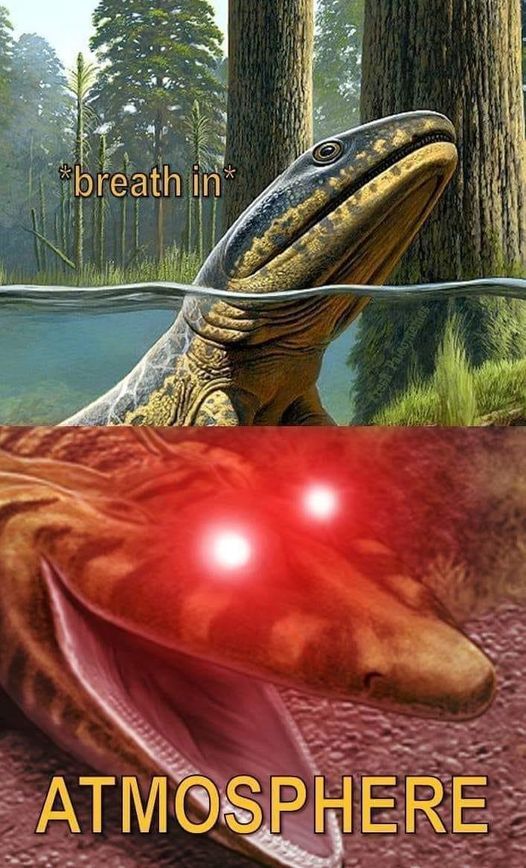
690 notes
·
View notes
Text
Tetrapods: We evolved proper limbs which let us do just about anything we want.
Fish: you fucked up a perfectly good fin is what you did! Look at it, it has arthritis!
422 notes
·
View notes
Text

I know my followers are going to hate me so much rn because my fic is on hiatus and they see a damn prehistoric creature come up.
I promise you, I need to break off from the fic temporarily until I can collect my thoughts because my creativity is at a halt lately, and dinosaurs and paleoart will bring me back.
Anyway, here is a late permian predator. A Gorgonopsidae named Inostrancevia Alexandri. I tried to get the proportions as best as I could. I was mixed on doing my usual fave of shrink wrap skin or healthy muscle and fur. The speculations lean towards fur(or hair) so I pulled that out. And holy shit I struggled so bad with the hands(claws?) And fur. I can't draw fur digitally because of having to close every line connection. Like fffff how do ppl do it?!
Anyway, please give a like and a reblog if you want, I would appreciate it a lot!
#inostrancevia#gorgonopsid#paleoart#paleontology#gorgonopsidae#dinosaur#dinosaur art#late permian#permian#tw: blood#dinosaur horror#inostrancevia alexandri#therapsid#tetrapods
82 notes
·
View notes
Text
Appreciation for critters that look like they're from a spec evo project:

















#animals#zoology#keeperposting#marine biology#vertebrates#tetrapods#fish#mammals#ungulates#marsupials#ruminants#birds#bovidae#cervidae#chameleon#brookesia#anatidae#anseriformes#comb duck#ctenophore#venus girdle#comb jelly#mollusk#gastropods#sea slug#sea angel#amphibians#frogs#ranidae#indian bullfrog
106 notes
·
View notes
Text
Taxonomy Tournament: Reptiles
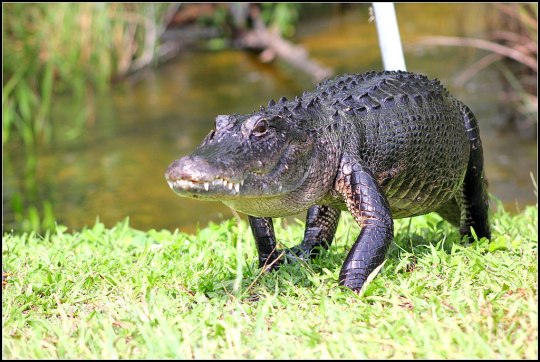
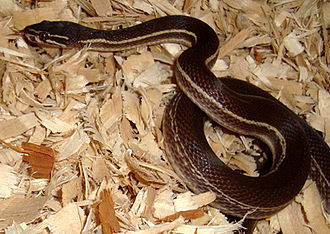
Crocodilia. This reptile order contains crocodiles and alligators
Serpentes. This reptile suborder is made up of snakes
#animals#biology#polls#poll tournament#zoology#crocodiles#aligators#reptiles#tetrapods#snakes#Crocodilia#Serpentes#0x17v0x68
350 notes
·
View notes
Text

Jumy-M Sea View / 海の景色
152 notes
·
View notes
Text

The Paleo Party Guest of the day is Hynerpeton!
Of the stem tetrapodomorphs, this may be the first one to have lost their fish-like gills. They were the first Devonian tetrapod discovered in the USA– the first of many!
Age: 365-363 mya!
Location: Hyner, Pennsylvania, USA
Stickers || Phone Wallpapers Masterlist
40 notes
·
View notes
Text

Vancleavea lingering above decaying trees.
139 notes
·
View notes
Text
Lost species are those that have not been observed in the wild for over 10 years, despite searches to find them. Lost tetrapod species (four-limbed vertebrate animals including amphibians, birds, mammals and reptiles) are a global phenomenon—there are more than 800 of them, and they are broadly distributed worldwide. Our research, published today in the journal Global Change Biology, attempts to pin down why certain tetrapod species are rediscovered but others not. It also reveals that the number of lost tetrapod species is increasing decade-on-decade. This means that despite many searches, we are losing tetrapod species at a faster rate than we are rediscovering them. In particular, rates of rediscovery for lost amphibian, bird and mammal species have slowed in recent years, while rates of loss for reptile species have increased.
Continue Reading.
117 notes
·
View notes
Text

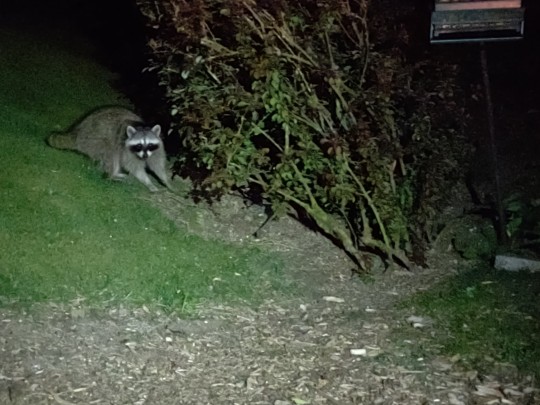
911 hello? There is a naked hairy little man in the yard
57 notes
·
View notes
Text
Time Travel Question 32: Pre-history. I forget what number....3? 4?
In honor of @kraetac.
Please add new suggestions below if you have them for future consideration. All cultures and time periods welcome.
#Nanotyrannus#Time Travel#Tyrannosaurus Rex#Dinosaurs#Paleontology#Lystrosaurus#Paleocene/Eocene Thermal Maximum#Hateg Island#Arthropluera#Tetrapods#Argentinosaurus#Prototaxites#Fungi#Spinosaurus#Icthyosaurs#The Luning Formation#Snakes#Evolution
134 notes
·
View notes
Text

had this lying around for a while, a quick sketch of "shock-jaw", a stem-tetrapod kaiju
#ollyneanderthal art#creature design#monster design#kaiju art#kaiju#kaiju oc#dino art#prehistoric animals#lobe finned fish#tetrapods
85 notes
·
View notes
Text

#somewhere in japan#tetrapods#cityscape#black and white photography#black and white#streetsnap#city landscape#suburban landscape#suburbcore#noir et blanc#bnwphotography#landscape photography#photography#liminal#monochrome#japan#scenery#scenecore#bnwmood#b&w#liminalcore#monochrome photography#landscape
8 notes
·
View notes